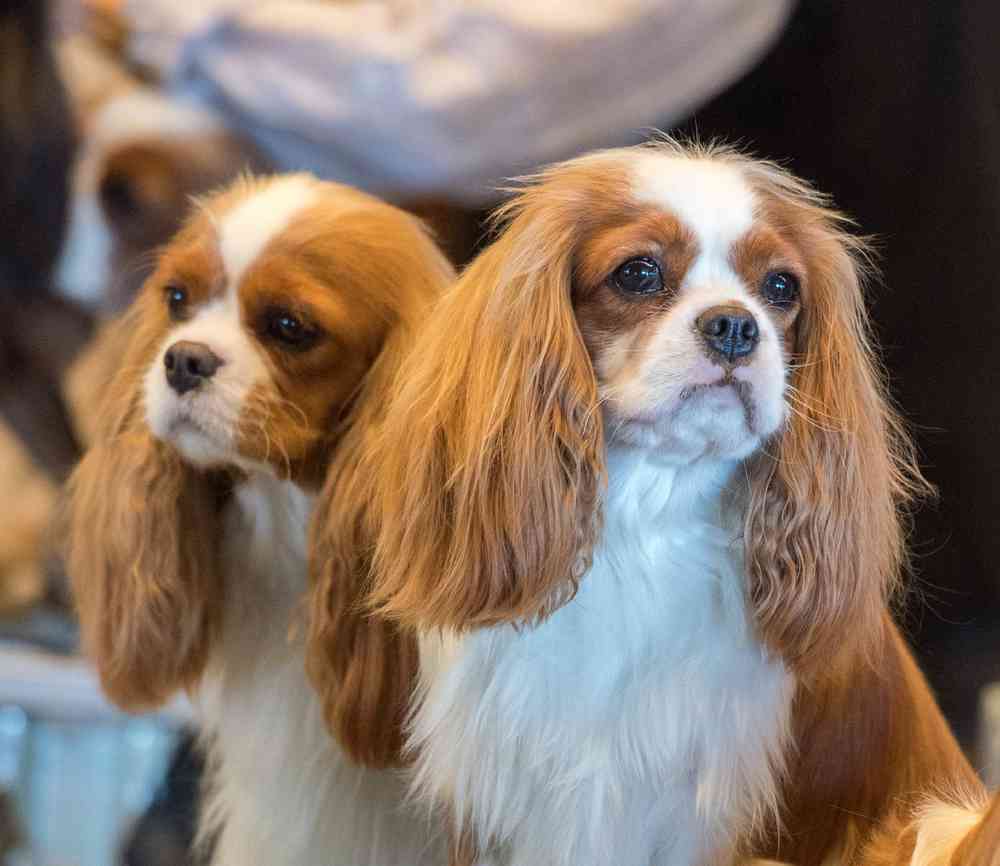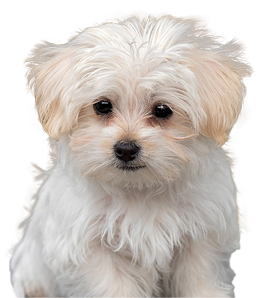
Cavalier King Charles Spaniel
The Cavalier King Charles Spaniel wears his connection to British history in his breed’s name. Cavaliers are the best of two worlds, combining the gentle attentiveness of a toy breed with the verve and athleticism of a sporting spaniel.
Available Pups
Puppy Knowledge
Breed Info
Group
Toy
Heritage
The Cavalier King Charles Spaniel descended from the 16th century King Charles Spaniel.
Description
Small, 12-13" at the shoulders, weighing anywhere from 10-18 pounds. The Cavalier King Charles Spaniel is the largest of the toy group with a solid compact body and a finely-textured long coat that comes in colors of tri-color, ruby, black and tan, or red and white.
Health Awareness
The Cavalier King Charles Spaniel has a life expectancy of 9-14 years and is prone to hip dysplasia, syringomyelia, eye diseases, dislocating patella, back problems, ear infections, deafness, and mitral valve disease.
Personality
The Cavalier King Charles Spaniel is fun-loving, affectionate, happy, outgoing, and fearless. They do love to chase anything or anyone that moves due to their natural hunting instinct. Be sure to teach them not to chase cars. They are eager to learn from you so training will be easy – as long as you practice. You need to be a calm, knowledgeable, and humane owner giving consistent and committed leadership to your Cavalier King Charles Spaniel using only motivational training methods.
Exercise/Energy Level
The Cavalier King Charles Spaniel requires a daily walk with off-leash play and running in a safe, fenced area. They also need mental stimulation so be sure to provide your Cavalier King Charles Spaniel with plenty of interactive toys that challenge their problem-solving skills. This breed does not do well in warm temperatures. Be sure to get your veterinarian’s permission before exercising your Cavalier King Charles Spaniel in warm temperatures.
Additional Information
Grooming Requirements: Requires regular brushing and professional grooming. Coat: Long Shedding: Average shedding Hypoallergenic: No, due to shedding Apartment Living: Good for apartment living if given sufficient exercise Lap Dog: Yes Good With Children: Good with children when well socialized at an early age; may be best with older children who understand how to safely handle a small dog. Good With Other Pets: Good with other dogs and non-canine pets when socialized at an early age
Breed Standard
General Appearance
The Cavalier King Charles Spaniel is an active, graceful, well-balanced toy spaniel, very gay and free in action; fearless and sporting in character, yet at the same time gentle and affectionate. It is this typical gay temperament, combined with true elegance and royal appearance which are of paramount importance in the breed. Natural appearance with no trimming, sculpting or artificial alteration is essential to breed type.
Size, Proportion, Substance
Size - Height 12 to 13 inches at the withers; weight proportionate to height, between 13 and 18 pounds. A small, well balanced dog within these weights is desirable, but these are ideal heights and weights and slight variations are permissible. Proportion - The body approaches squareness, yet if measured from point of shoulder to point of buttock, is slightly longer than the height at the withers. The height from the withers to the elbow is approximately equal to the height from the elbow to the ground. Substance - Bone moderate in proportion to size. Weedy and coarse specimens are to be equally penalized.
Head
Proportionate to size of dog, appearing neither too large nor too small for the body. Expression - The sweet, gentle, melting expression is an important breed characteristic. Eyes - Large, round, but not prominent and set well apart; color a warm, very dark brown; giving a lustrous, limpid look. Rims dark. There should be cushioning under the eyes which contributes to the soft expression. Faults - small, almond-shaped, prominent, or light eyes; white surrounding ring. Ears - Set high, but not close, on top of the head. Leather long with plenty of feathering and wide enough so that when the dog is alert, the ears fan slightly forward to frame the face. Skull - Slightly rounded, but without dome or peak; it should appear flat because of the high placement of the ears. Stop is moderate, neither filled nor deep. Muzzle - Full muzzle slightly tapered. Length from base of stop to tip of nose about 1½ inches. Face well filled below eyes. Any tendency towards snipiness undesirable. Nose pigment uniformly black without flesh marks and nostrils well developed. Lips well developed but not pendulous giving a clean finish. Faults - Sharp or pointed muzzles. Bite - A perfect, regular and complete scissors bite is preferred, i.e. the upper teeth closely overlapping the lower teeth and set square into the jaws. Faults - undershot bite, weak or crooked teeth, crooked jaws.
Neck, Topline, Body
Fairly long, without throatiness, well enough muscled to form a slight arch at the crest. Set smoothly into nicely sloping shoulders to give an elegant look. Topline - Level both when moving and standing. Body - Short-coupled with ribs well sprung but not barrelled. Chest moderately deep, extending to elbows allowing ample heart room. Slightly less body at the flank than at the last rib, but with no tucked-up appearance.
Forequarters
Shoulders well laid back. Forelegs straight and well under the dog with elbows close to the sides. Pasterns strong and feet compact with well-cushioned pads. Dewclaws may be removed.
Hindquarters
The hindquarters construction should come down from a good broad pelvis, moderately muscled; stifles well turned and hocks well let down. The hindlegs when viewed from the rear should parallel each other from hock to heel. Faults - Cow or sickle hocks.
Color
Blenheim - Rich chestnut markings well broken up on a clear, pearly white ground. The ears must be chestnut and the color evenly spaced on the head and surrounding both eyes, with a white blaze between the eyes and ears, in the center of which may be the lozenge or "Blenheim spot." The lozenge is a unique and desirable, though not essential, characteristic of the Blenheim. Tricolor - Jet black markings well broken up on a clear, pearly white ground. The ears must be black and the color evenly spaced on the head and surrounding both eyes, with a white blaze between the eyes. Rich tan markings over the eyes, on cheeks, inside ears and on underside of tail. Ruby - Whole-colored rich red. Black and Tan - Jet black with rich, bright tan markings over eyes, on cheeks, inside ears, on chest, legs, and on underside of tail. Faults - Heavy ticking on Blenheims or Tricolors, white marks on Rubies or Black and Tans.
Tail
Well set on, carried happily but never much above the level of the back, and in constant characteristic motion when the dog is in action. Docking is optional. If docked, no more than one-third to be remove
Temperament
Gay, friendly, non-aggressive with no tendency towards nervousness or shyness. Bad temper, shyness, and meanness are not to be tolerated and are to be severely penalized as to effectively remove the specimen from competition.
Trivia
Did you know?
The Cavalier King Charles Spaniel was in the HBO series, "Sex and the City".

